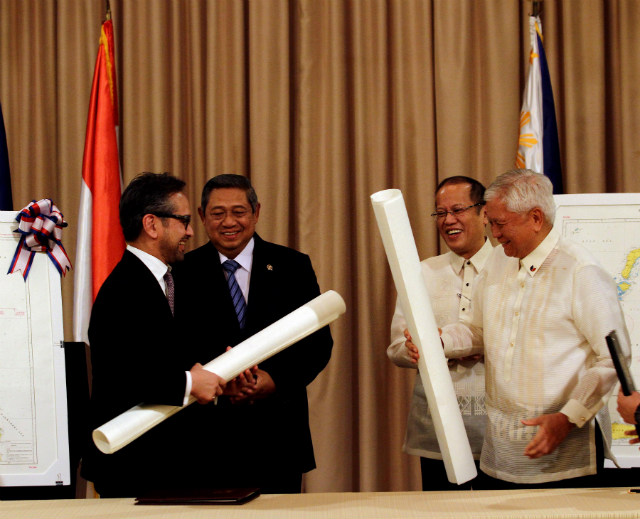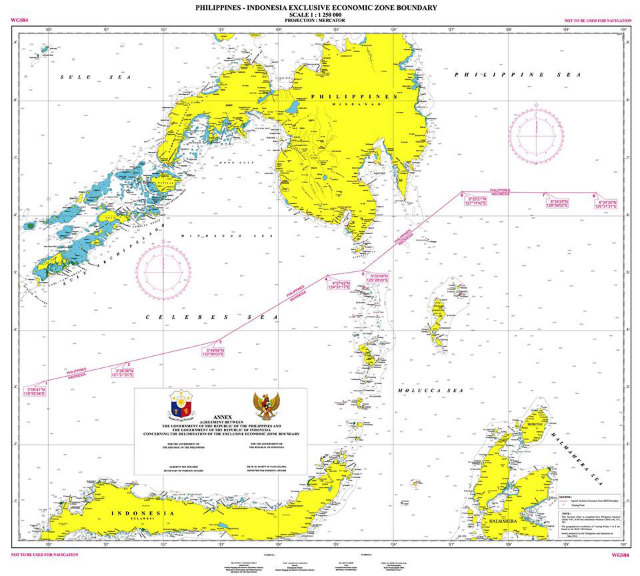A first for the Philippines, the treaty draws a boundary between overlapping EEZs

HISTORIC DEAL.
Indonesian Foreign Minister Marty Natalegawa (left) and Philippine Foreign
Secretary Albert del Rosario (right) finish signing a historic maritime deal
between their countries. Behind them, Indonesian President Susilo Bambang
Yudhoyono and Philippine President Benigno Aquino III witness the signing.
Photo by Rey Baniquet/PCOO/Malacañang Photo Bureau
It took 20 years to set this boundary between the overlapping EEZs in the
In a primer, the Philippines
"Coast guard
and law enforcement authorities of the Philippines
and Indonesia
This is the Philippines
“The agreement is
a milestone for Philippine-Indonesia relations as the EEZ boundary will open
opportunities for closer cooperation in the preservation and protection of the
rich marine environment in the area, increased trade, and enhanced maritime
security,” the DFA explained.
Philippine
Foreign Affairs Secretary Albert del Rosario and his Indonesian counterpart,
Foreign Minister Marty Natalegawa, inked the deal in Manila
Yudhoyono is in Manila for a two-day state visit timed with the Philippine
hosting of the World Economic Forum on East Asia
(WEF-EA). He was due to receive the prestigious Global Statesmanship Award from
the WEF on Friday.

The Philippines and Indonesia
In its primer,
the DFA said Aquino needs to ratify the treaty, then submit it to the Senate
"for concurrence in accordance with Section 21, Article VII of the
Philippine Constitution."
Proof of
'friendship, goodwill'
“The conclusion
of the negotiations attests to the friendship, patience, goodwill, and
commitment of the governments of the Philippines
and Indonesia
The EEZ is an
area 200 nautical miles from a coastal state's baselines, or edges, within
which the state has the sovereign rights to explore and exploit, and conserve
and manage natural resources, among others.
The rules for
setting the EEZ boundary can be found in the United Nations Convention on the
Law of the Sea (UNCLOS), the same convention that the Philippines invokes in
its historic case against China over the disputed West Philippine Sea (South
China Sea).
The case between
the Philippines and China
The Philippines , for one, insists that its case
against China
Garcia however said
the agreement “is a significant contribution to, and an example of, reasonable
efforts to build a stable and peaceful regional community, in consideration of
the interests of countries concerned and in accordance with international law.”
http://www.rappler.com/nation/58737-philippines-indonesia-eez-boundary-agreement

No comments:
Post a Comment
Note: Only a member of this blog may post a comment.